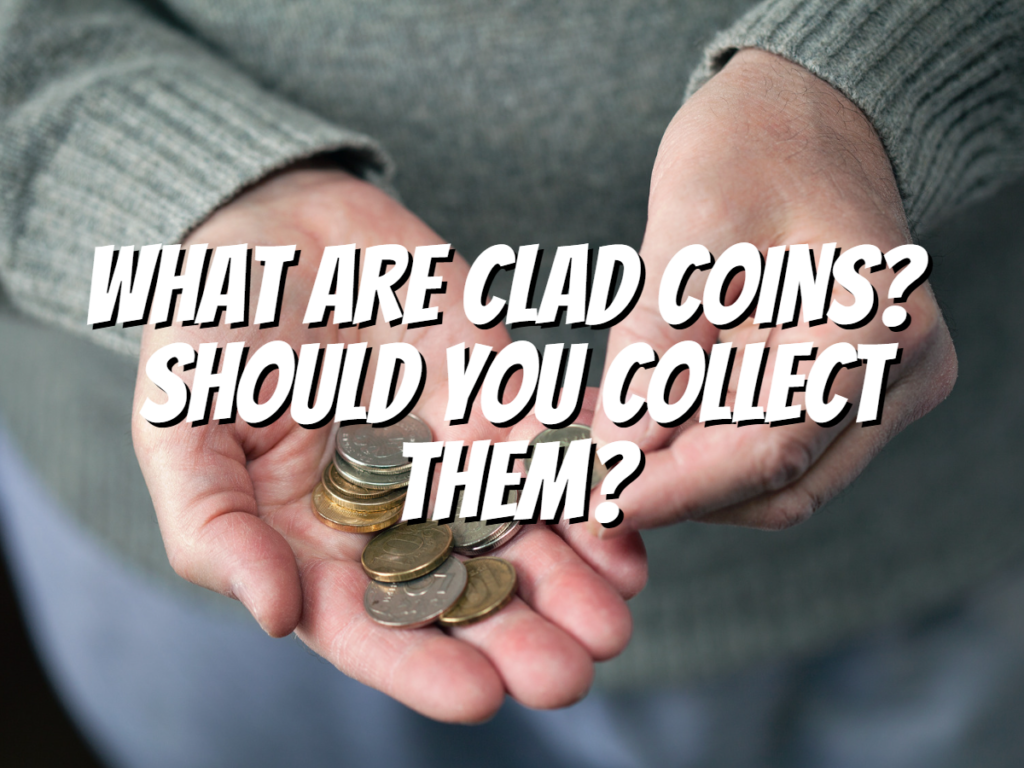If you’re like me, you love collecting coins. I’ve always been fascinated by the art and history that goes into minting them.
So when I discovered a new type of coin was being produced, I had to know more. Some of the coins I discovered are clad coins.
But what are clad coins? How do they differ from traditional coins? Are they worth collecting? Let’s find out!
What are Clad Coins?

Introducing the exquisite clad coin – a stunning piece of currency featuring multiple metal layers within.
Discover the sleek and modern design of U.S. clad coins. Boasting a pure copper inner core and outer layers crafted from a nickel-copper alloy that mimics the look of silver, these coins are the epitome of sophistication.
Did you know that the U.S. dollar and other clad coins are fascinating examples of currency?
Picture this: you reach into your pocket and pull out a shiny half-dollar and a gleaming quarter. The weight of the coins feels satisfying in your hand as you consider what you could buy with them.
Did you know that the “golden dollar” coins, like the Presidential Dollar and the Sacagawea Dollar, are also included in this discussion?
So, let’s dive deeper into these fascinating coins! These amazing coins comprise a special copper, zinc, manganese, and nickel blend. And get this – their core is completely made of copper!
History of Clad Coins

In the early 1960s, the United States faced a critical shortage of silver, putting the value of coins like the dime and quarter at risk of surpassing their face value due to their authentic silver content.
The 1965 Coinage Act placed a significant emphasis on this scarcity.
As the scarcity of silver grew, individuals found themselves amassing copious quantities of dimes and quarters.
Transform your coins into valuable silver bullion by melting them down. President Lyndon B. Johnson proposed a modification to the currency system in a letter addressed to Congress.
In a strategic move to avert the chaos Johnson had foreseen, government officials opted to replace silver with copper and nickel in the coins.
On the 23rd of July, 1965, Johnson put their strategy into action by signing the Coinage Act of 1965.
The enactment of the Coinage Act of 1965 resulted in the development of “clad coins,” which are composed of a copper center enveloped by a copper-nickel blend.
According to the Federal Reserve Bank of New York, the measure mentioned above had effectively diminished the domestic employment of silver for coinage during the period, indicating its efficacy.
The legislation stipulated a gradual reduction in the silver composition of half dollars from 40% to match that of the dime and quarter.
Are Clad Coins Valuable?
Clad coins serve a purpose beyond just facilitating transactions. Experience the thrill of collecting special edition coins from various mints worldwide.
Experience the exquisite craftsmanship of proof sets and the distinct finishes of unique coins.
For example, experience the brilliance of the United States Mint’s annual proof set, featuring common circulation coins with mirror-like fields and frosted finishes.
Furthermore, a collection of commemorative coins has featured clad coins.
The half-dollar coin is commonly used as a clad coin for United States commemorative coins. It is often made available at a reasonable cost, making it accessible to regular coin collectors.
In contrast, the dollar coin is commonly composed of silver and has a higher value than its counterpart, the half-dollar coin. The silver commemorative coins comprised 90% silver and 10% copper.
In 2019, the Mint released a silver coin with a purity level of 99.9%. According to the Mint’s analysis, opting for 99.9% pure silver instead of a 90% silver alloy resulted in greater cost-effectiveness.
Are Clad Coins Worth Collecting?

The allure of clad coins is a must-have for any collector. While they may not hold the same value as silver or gold, collecting coins can be an enjoyable and cost-effective pastime.
- Indulging in the collection of clad coins can be an enjoyable and entertaining pastime. Discover the fascinating world of history and broaden your knowledge with this excellent investment that is sure to appreciate over time.
- While their value may vary, their captivating designs and global origins make them a delightful addition to any collection.
Tips for Collecting Clad Coins
- Buy coins in good condition.
- Buy coins from a series that you like.
- Buy coins from a series that collectors like.
- Buy coins from a series that investors like.
Before you go…
If you like coins, there are plenty of ways to collect them. The beauty of clad coins is that they are still affordable and easy to buy. You can find them at your local coin shop or online dealer, and if you want to get fancy, there’s always eBay! So clad coins might be right up your alley if you’re looking for new additions to your collection—and maybe even a few extra bucks in your pocket!
Check out my next article: “How to Tell if a Coin is Silver or Clad?“
Related Articles:

